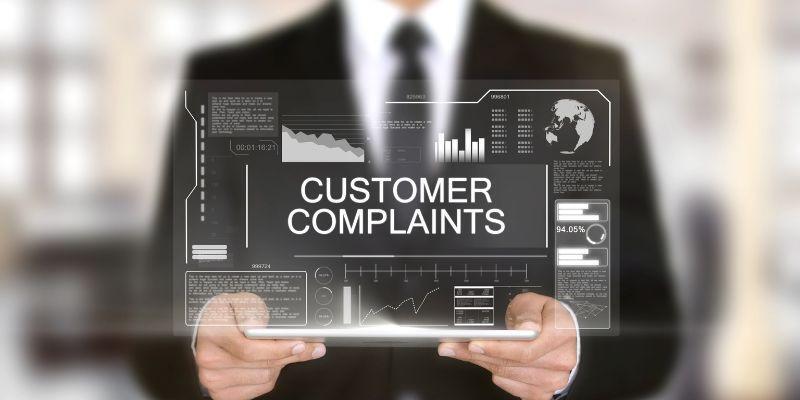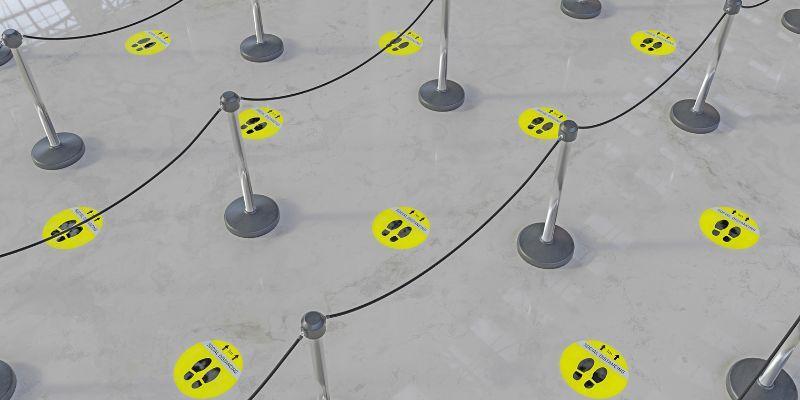Setting customer service goals is pivotal for business success. In modern business, meeting customer needs is non-negotiable and crucial to survival and growth.
These goals act as guiding lights, aligning your team toward common objectives. They’re not just about keeping customers happy; they directly impact your bottom line.
Research shows that businesses with a strong customer service focus outperform their competitors by 85% in sales growth.
So, if you’re looking to thrive, it starts with setting smart goals for customer service. Let’s examine the essential elements and types to ensure your business excels in customer satisfaction and retention.
Key Takeaways
- Customer service goals are essential for business success, aligning teams, and driving performance.
- SMART goals ensure clarity and focus, improving efficiency and customer satisfaction.
- Customer feedback guides the setting of relevant goals, addressing current challenges effectively.
- Achievable goals prevent burnout and disappointment, fostering team morale and success.
- Proactive communication and timely resolution enhance customer experience and loyalty.
- Meeting customer service goals cultivates stronger relationships and long-term business growth.
Why Set Customer Service Goals?
Setting customer service goals is crucial for businesses to thrive. Imagine a game without a goal—it’d be chaotic! Similarly, without goals, businesses can’t track progress or know where they’re headed.
Customer feedback, like comments or surveys, helps businesses understand what customers want and need and set relevant customer service goals. By setting clear customer service goals, companies can improve their performance.
For instance, a goal might be to reduce response time to customer inquiries by 20% within six months. Another could be to increase customer satisfaction ratings by two points within a quarter. These goals give teams something to aim for, like scoring a goal in soccer.
Ultimately, meeting these goals means happier customers and better business success. So, by setting customer service goals, companies can stay on track, make customers content, and grow their business.
Critical Elements of Effective Customer Service Goals

Practical customer service goals are crucial for guiding businesses to success. Think of them as a recipe for success. Like secret tips and insights, SMART goals for customer service, specific, measurable, achievable, relevant, and time-bound, are essential.
They provide clarity and focus, ensuring everyone is on track. Let’s explore the critical elements of practical customer service goals.
- Specificity
- Measurability
- Achievability
- Relevance
- Time-bound
1. Specificity
Specificity is critical when setting customer service goals. It’s like giving directions for a task execution—vague instructions will only lead to confusion. By defining clear and measurable objectives, teams know exactly what they’re working towards.
For example, instead of saying “improve customer satisfaction,” a specific goal could be “increase customer satisfaction ratings by two points within three months.” This clarity helps teams stay focused and motivated.
Avoiding vague or generic goals ensures everyone understands the target and can measure progress effectively.
Remember, SMART goals for customer service examples are specific, measurable, achievable, relevant, and time-bound. So, whether it’s reducing response time or resolving complaints faster, make sure your goals are crystal clear.
2. Measurability
Measurability is like having a ruler to track progress—it ensures you’re moving in the right direction. When it comes to customer service goals, measuring success is essential.
For instance, instead of aiming to “enhance customer service,” a measurable goal could be to “reduce average response time to customer inquiries by 20% within six months.”
This allows teams to track their progress regularly and make adjustments as needed. Examples of measurable customer service goals include increasing customer satisfaction scores, reducing wait times, or resolving complaints within a specific timeframe.
Remember, what gets measured gets managed, so make sure your customer service goals are measurable for success.
3. Achievability

Achievability is about setting goals that are within reach. When crafting customer service goals and objectives, it’s crucial to set realistic targets that your team can achieve.
Research data based on business analytics relates that setting overly ambitious goals can lead to burnout and disappointment. It’s essential to strike a balance between ambition and practicality.
For example, if your business aims to “improve customer retention by 50% in one month,” that might be unrealistic. Instead, consider setting a goal like “increase customer retention by 10% within six months.”
This still pushes the team to excel while remaining achievable. Remember, achievable customer service goals contribute to team morale and general success. So, keep your goals within reach, and watch your business flourish.
4. Relevance
Relevance is crucial for setting practical customer service goals. It’s about ensuring that your goals align with the broader objectives of the business and address current challenges.
For instance, if your company aims to increase revenue, setting a customer service goal to improve upselling techniques would be relevant.
Additionally, goals should directly address existing customer service issues, such as long wait times or product concerns. For example, implementing new training programs to address a high rate of customer complaints would be relevant and beneficial.
Research indicates that businesses with aligned goals are 67% more likely to succeed. By focusing on relevance, teams can work towards common objectives that contribute to providing exceptional customer service experiences and driving business growth.
5. Time-bound
Time-bound goals provide a sense of urgency and direction, much like setting a deadline for a project.
When learning how to set individual customer service goals, it’s essential to establish a timeframe for achievement. This creates accountability and helps teams stay focused on meeting objectives.
For example, instead of saying “improve response time,” a time-bound goal could be “reduce response time by 20% within three months.” Additionally, regularly reviewing and adjusting timelines is crucial to ensure progress stays on track.
Given the nature of the industry, businesses must adapt to changing circumstances. For instance, if initial timelines are too ambitious or unforeseen challenges arise, it’s essential to recalibrate goals accordingly.
By incorporating time-bound elements into how to set individual customer service goals, businesses can effectively manage resources and work towards promptly achieving their customer service objectives.
How to Set Customer Service Goals with Examples

These practical strategies for customer service goals are essential for guiding teams toward success. They provide a clear vision of what needs to be achieved, serving as a roadmap for delivering exceptional service.
From reducing response times to increasing customer satisfaction ratings, these goals ensure businesses stay focused on meeting customer needs and expectations. Let’s study some best practices of intelligent customer service goals that can improve your customer experience.
- Improve Response Time
- Increase Customer Satisfaction Scores
- Enhance First Contact Resolution Rates
- Decrease Customer Complaints
- Optimize Service Accessibility
- Foster Proactive Communication
1. Improve Response Time
Enhance customer service efficiency by setting specific response time targets for inquiries. Establishing clear benchmarks ensures timely resolution of customer issues, demonstrating responsiveness and dedication to meeting their needs promptly.
Implementing tools and streamlined processes such as automated response systems and dedicated support channels facilitates quick and effective customer assistance, fostering satisfaction and loyalty.
Example:
WaveTec is the game-changer in optimizing the response time of San Diego County! Wavetec isn’t just another software tool; it’s a transformative solution that redefines customer interaction. This technology revolutionizes managing queues and improves customer satisfaction like never before.
Wavetec streamlines queuing, empowering customers to book appointments and join virtual queues effortlessly.
2. Increase Customer Satisfaction Scores
Improve satisfaction by closely monitoring and analyzing customer feedback. Regularly assessing feedback allows for insights into areas needing improvement, enabling the implementation of targeted enhancements.
By valuing customer feedback, businesses can actively address concerns and improve services, creating an environment that meets customer expectations. This commitment to improvement aligns with customer service goals, driving satisfaction and fostering loyalty.
Example:
Wavetec’s Queue Management System at Carrefour Kenya has transformed the shopping experience in numerous ways. By eliminating physical queues, customers enjoy enhanced convenience, freeing them to explore the store and engage in other activities.
This reduction in perceived wait times has led to a notable increase in customer satisfaction and loyalty, as shoppers appreciate the efficiency and convenience offered by WaveTec.
3. Enhance First Contact Resolution Rates
Boosting customer service efficiency is fundamental for achieving goals in customer service. Implementing training programs for representatives ensures they’re equipped to resolve issues promptly, aligning with customer service goals.
By providing comprehensive resources to tackle common issues, businesses empower their teams to address concerns effectively on the first contact. This enhances customer satisfaction and supports the overarching objectives of delivering exceptional service.
Example:
Wavetec got on a service transformation process in collaboration with Swiss Post, beginning with in-depth consultations to discern their unique needs. Subsequently, Wavetec devised a bespoke solution tailored to Swiss Post, comprising various integral components.
First and foremost is the implementation of Lobby Leader, an application meticulously crafted to efficiently manage customer flow within branches, offering insights such as average wait times, service durations, and queue occupancy.
4. Decrease Customer Complaints

Businesses need to reduce the number of complaints from customers. One way to do this is by finding out what problems keep happening and stopping them before they occur. This is like fixing a leaky faucet before it becomes a big problem.
Another way is to ensure customers know what to expect by improving communication. This means being clear about what services are offered and how they work.
By doing these things, businesses can lower the number of complaints from customers, make them happier, and achieve their customer service goals and objectives.
Example:
Wavetec has implemented a revolutionary system to enhance the patient experience and mitigate complaints at the Ministry of Health (MOH) UAE facilities. Patients can now book appointments online through the MOH website and receive a printout of their appointment receipt containing a barcode.
Upon arrival at the MOH UAE facility, patients simply scan their barcode at WaveTec’s Ticketing Kiosk to obtain a ticket and wait comfortably in the designated waiting area.
This innovative take-a-ticket solution eliminates crowded service areas. It optimizes customer flow, enabling patients to join the queue before their arrival, but also significantly reduces complaints by addressing common pain points and enhancing operational efficiency at MOH facilities.
5. Optimize Service Accessibility
Ensuring that everyone can easily access the assistance they require is fundamental for achieving customer service goals.
For instance, offering web appointments enhances accessibility by allowing customers to conveniently schedule visits online, like widening pathways for smoother navigation or using a queue management system for smooth customer flow.
By implementing such measures, businesses exemplify their commitment to customer satisfaction, aligning with customer service goals and examples. It’s like opening more doors and welcoming more people to access the services they need promptly and efficiently, enhancing the overall experience and fostering customer loyalty.
Example:
By leveraging WaveTec’s enterprise customer journey management solution, HSBC Mexico ensures personalized experiences for each customer while optimizing operational efficiency.
The solution, tailored to each branch’s specific needs, reduces customer waiting times and maximizes sales opportunities by transforming potential sales into guaranteed ones.
This data-driven approach is facilitated by centralized dashboards and reports accessible to branch and head office management, ensuring continuous improvement in service accessibility and customer satisfaction across HSBC Mexico’s branch network.
6. Foster Proactive Communication
Fostering proactive communication is like keeping the door open for conversation—it ensures customers feel heard and valued. By reaching out first, businesses show they care about meeting customer needs before problems arise.
Studies show that 85% of customers appreciate proactive communication from businesses. This might involve sending updates about orders or addressing potential issues before they escalate.
By prioritizing proactive communication, businesses can achieve customer service goals by building stronger customer relationships and enhancing satisfaction. It’s like keeping the lines of communication open, ensuring everyone feels supported and understood.
Example:
Here’s an example of fostering proactive communication in a business-to-customer setup
- Order Confirmation Emails
- Shipping Updates
- Proactive Issue Resolution
- Product Usage Tips
- Feedback Requests
- Promotional Offers
Final Words
As explored in this write-up, achieving customer service goals is crucial for business success. Companies can enhance customer satisfaction and retention by setting clear objectives aligned with strategic goals.
From improving response times to proactive communication, each goal contributes to exceptional service.
Implementing SMART goals and reviewing progress allows for adjustment and refinement. Ultimately, it’s about building meaningful customer connections and striving for excellence.
Businesses create lasting impressions and drive success by prioritizing satisfaction and fostering a customer-centric culture.
Let’s continue setting ambitious yet achievable goals, exceeding customer expectations, and driving our businesses forward.
BOOK A FREE DEMO





